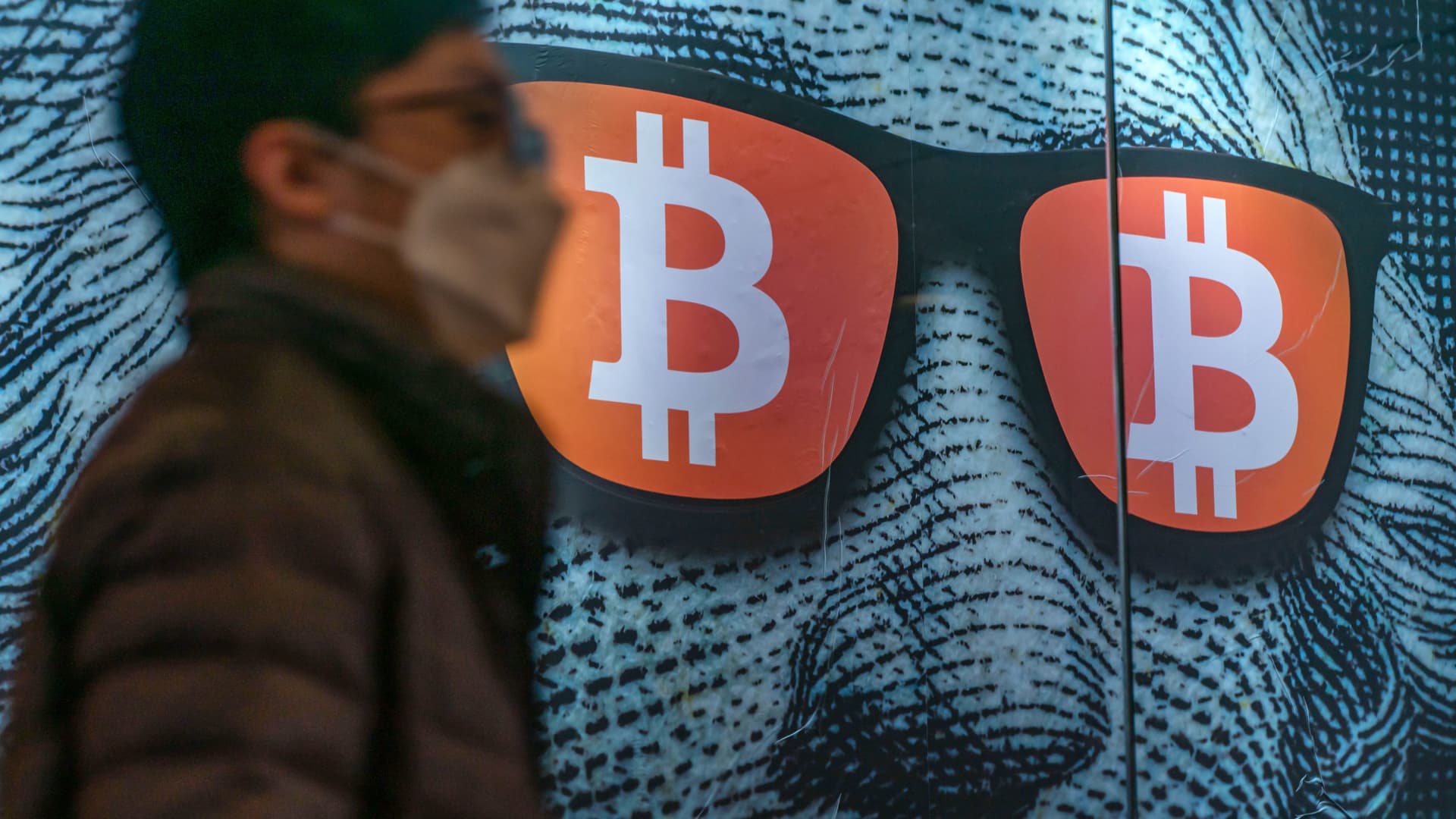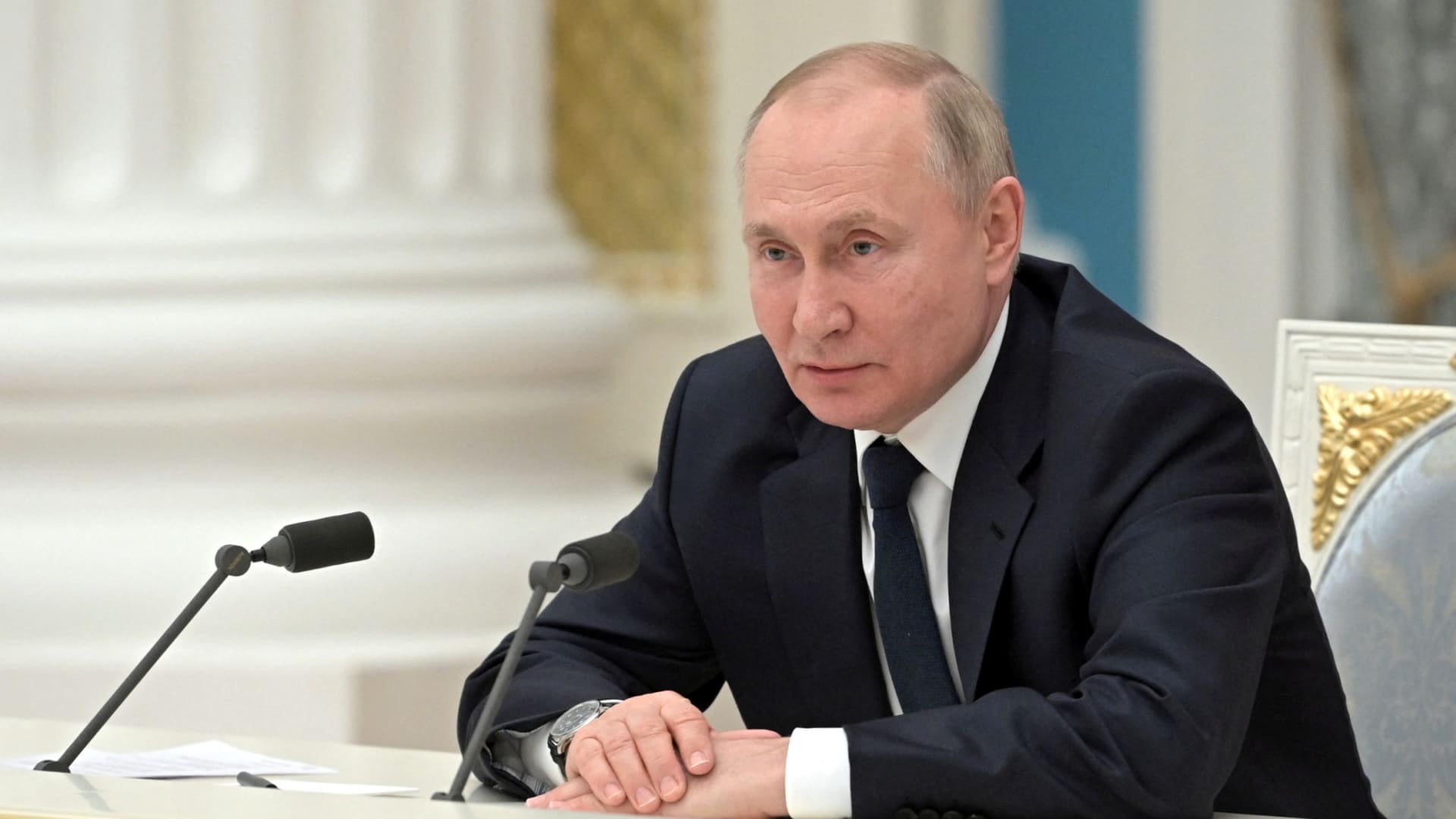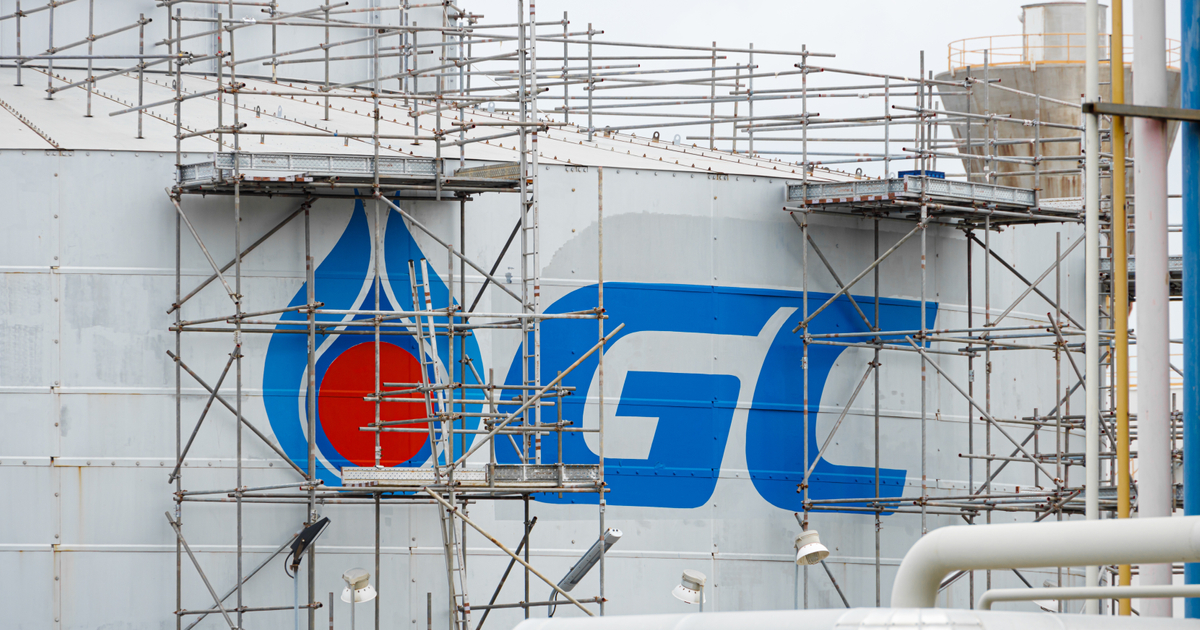A $3.5 billion bet on bitcoin becoming a 'reserve currency' for crypto is being put to the test
South Korean entrepreneur Do Kwon is betting billions on the idea of bitcoin becoming the "reserve currency" of the crypto economy.

Pedestrians walk past a display of cryptocurrency Bitcoin on February 15, 2022 in Hong Kong, China.
Anthony Kwan | Getty Images
A multibillion-dollar bet that bitcoin can act as a "reserve currency" for the crypto economy is already being tested as UST, a controversial stablecoin, struggles to maintain its $1 peg.
UST dropped close to 99 cents over the weekend, fueling fears of a potential "bank run" that could force Terra, the project behind it, to dip into a $3.5 billion pile of bitcoin to support the token.
Now, the Luna Foundation Guard, an organization created by Terra's inventor, says it will lend out $750 million in bitcoin to trading firms to hold UST's price peg. But that's done little to assuage investors' concerns about the implications for bitcoin.
What is UST?
Developed by Singapore-based Terraform Labs, UST is what's known as an algorithmic stablecoin. It aims to carry out the function of stablecoins like tether, which track the price of the U.S. dollar, but without any actual cash held in a reserve to back it.
Instead, UST — or "terraUSD" — is created by destroying a sister token, known as luna, using smart contracts, lines of code written into the blockchain.
"If you've got, say, $405, and you burn one luna, you should be able to mint 405 of the UST stablecoin," Carol Alexander, professor of finance at the University of Sussex, explains.
The same applies vice versa — new luna is minted by burning UST and other algorithmic stablecoins that Terra supports.
Terra's protocols also feature an arbitrage mechanism, where investors can exploit deviating prices in each of the tokens. For example, too much demand for UST may result in its price topping $1. That means traders can convert $1 worth of luna into UST, and pocket the difference as profit.
The model is designed to even out supply and demand for UST. When the price of UST is too high, users are incentivized to burn luna and create new UST, increasing the stablecoin's supply while also decreasing the amount of luna in circulation.
"The luna becomes more scarce, which makes it more valuable, transferring that value into UST," Alexander says.
When UST's price is too low, the reverse happens — UST gets burned and luna is minted. That should, in theory, help stabilize prices.
The problem
"This assumes normal market conditions," said David Moreno Darocas, a research analyst at CryptoCompare.
"During periods of high volatility and one-sided buy/sell activity for UST, the above stabilizer may not be sufficient to maintain the peg in the short-term."
There have been multiple instances where UST has decoupled from its $1 peg, raising concerns about the viability of its economic model — particularly in a situation when several people try to redeem their tokens at once.
The latest challenge arrived over the weekend. Hundreds of millions of UST was sold on Anchor, Terra's flagship lending platform, as well as Curve and Binance, resulting in accusations of a "coordinated attack" on the stablecoin.
"Men will literally attack a stablecoin unsuccessfully instead of going to therapy," Do Kwon, the South Korean crypto entrepreneur who co-founded Terraform Labs, said in a since-deleted tweet.
'Reserve currency'
To address concerns over the sustainability of its stablecoin, Kwon plans to buy up to $10 billion worth of bitcoin through a nonprofit called Luna Foundation Guard. These funds would provide a backstop in case of a dramatic fall in the value of UST.
The idea is that bitcoin would act as the "reserve currency" for the Terra ecosystem.
LFG bought another $1.5 billion in bitcoin last week, taking its total reserves to about $3.5 billion. However, on Monday, the organization said it is taking steps to "proactively defend the stability" of UST.
That includes lending $750 million worth of bitcoin to trading firms to "protect the UST peg" and a further 750 million in UST being lent out to buy more bitcoin "as market conditions normalize."
"In the case of most of these algo stablecoins, we have seen that the teams behind the project usually need to step in — so these are not fully decentralized or managed independently yet," said Vijay Ayyar, head of corporate development and international at crypto exchange Luno.
What it means for bitcoin
Investors are worried that UST's bitcoin underpinning will result in further pain for the cryptocurrency.
The world's largest digital coin dropped below $33,000 on Monday, slumping to its lowest level since July 2021. It was last trading at about $32,921, down 6% in the last 24 hours.
LFG's intervention "will add to the selling pressure," said Derek Lim, head of crypto insights at the Bybit exchange. "BTC will likely go lower before it bounces back when short-sellers take profit."
Kwon insisted LFG is "not trying to exit its bitcoin position."
"As markets recover, we plan to have the loan redeemed to us in BTC, increasing the size of our total reserves," he said.
The plan is to eventually allow UST holders to redeem their tokens in exchange for bitcoin. Bitcoin would play the role normally taken by luna in a crisis scenario, with arbitrageurs buying UST and then swapping it for discounted bitcoin. But this is still weeks away from being implemented, and it's unclear how it would work in practice.
The biggest risk moving forward would be another depegging of UST forcing LFG to liquidate its bitcoin holdings, said Hendo Verbeek, head of quantitative trading operations at Faculty Group. That could, in turn, result in further liquidations of "over-leveraged" buyers, according to Verbeek.
"This is a nightmare scenario which looks like a real outcome of events," he said.

 Hollif
Hollif 






























